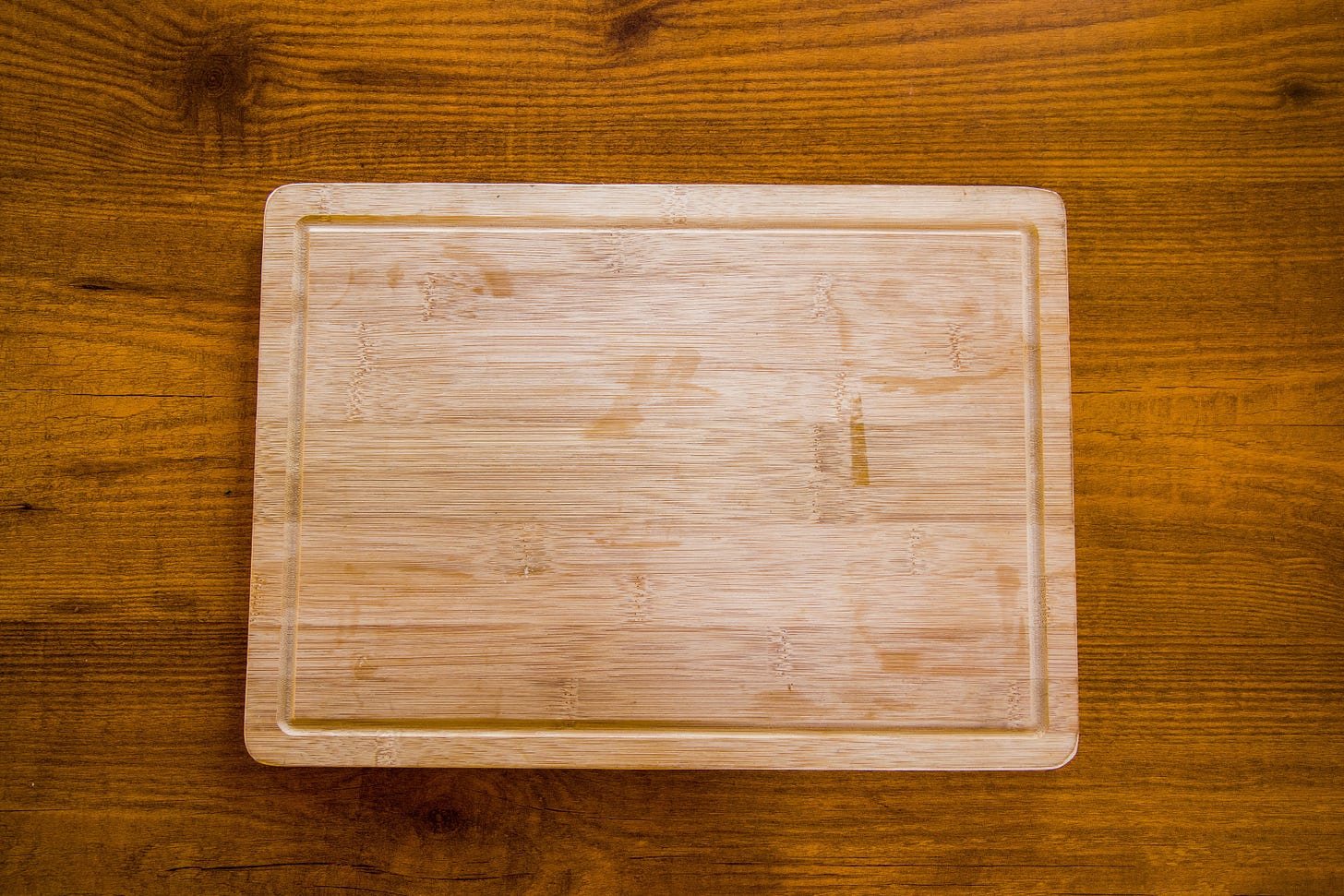Stop Using a Plastic Cutting Board - Here's What You Need to Know
And why you should switch to a wooden cutting board instead.
Hi friends,
Let me be blunt: you should stop using a plastic cutting board. Why? Because it’s toxic and could be harming you and your loved ones.
If you’re like me, you try to make good choices in the kitchen—prioritizing first in-class ingredients, focusing on high-protein recipes, and staying away from plastic as much as possible.
But when it comes to creating a non-toxic kitchen, one item you might be overlooking is your cutting board.
Plastic cutting boards are cheap, lightweight, and easy to clean. But here’s the truth: they are toxic. And if you're trying to keep your kitchen healthy, you should know exactly what to avoid.
Let’s break it down.
The Problem With Plastic
Many plastic cutting boards are made from polyethylene (HDPE or LDPE) or polypropylene. These are food-safe in theory. That’s perhaps why the FDA hasn’t banned them. But when you slice into them repeatedly with a knife, they shed microplastics. And these microplastics are getting into your body, which is what you don’t want.
Microplastics are so small that you can hardly see them with your eyes. How many microplastics are we talking about? It depends on the sharpness of your knife, how often you use your plastic cutting board, etc. But according to one study, scientists found over 1,000 microplastics each time a plastic board was used to cut carrots!
Studies have shown that these microplastics can enter the food you're preparing. From there, they can make their way into your body. Microplastics have been linked to inflammation, hormonal disruption, and gut health issues. And once they’re in your system, they don’t just disappear.
But it gets worse.
Your plastic cutting board is contaminated, long before it arrives on your kitchen table. For example, when a plastic cutting board is made during the manufacturing process, it is made with chemicals (like phthalates) that can disrupt your hormone levels.
If you have older plastic boards that are heavily knife-scarred or warped, it’s a good idea to replace them. But even if you just bought a plastic cutting board yesterday, I would throw it away and replace it with a better alternative.
So, What’s the Safer Choice?
Wood. Get a wooden cutting board.
At Kaywood’s Kitchen, we use a wood cutting board made from acacia wood, which you can buy on Amazon here.
Unlike plastic, wood doesn’t shed microplastics, and it’s not made with questionable chemicals.
Not all wooden cutting boards are created equally, though. You want to avoid ones made with glues or adhesives — or if you find one with adhesives you love, just make sure it is food-safe adhesives.
Bottom Line
Plastic cutting boards can be convenient, but some of them can also be harmful. Microplastics, chemical leaching, and poor-quality materials are risks that aren’t worth taking.
One of the easiest swaps you will ever make to create a non-toxic kitchen is switching from your plastic cutting board to a wooden one. It will cost a little more money, but the long-term impact on your health is worth it.
Stay well,
David Kaywood
P.S. Be sure to follow us on Instagram to get healthy recipes and non-toxic swaps. We’d love to connect with you there!



